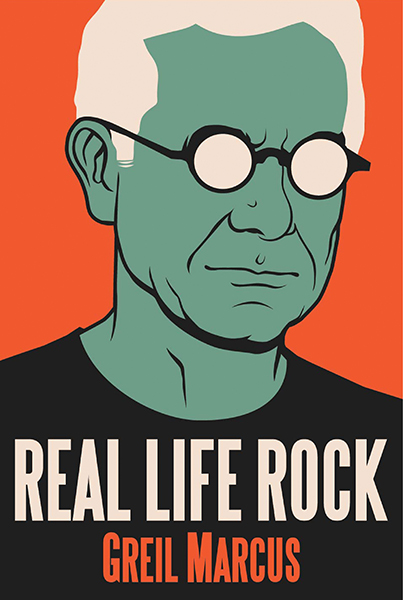
Critics’ darling and rising star Shamir recently gave NME a playlist of his favorite recent musical discoveries, and his most lavish praise was for little known (for now) rapper Michete and his mixtape Cool Tricks, described as “a gift from the ratchet gods.” It’s a description as compelling as most any Shamir song, pulling our ears (and eyes) to check out this supposed Prometheus who Shamir previously hailed with fire emojis. Fire, indeed, is what Cool Tricks seems poised to generate—album opener "Rap Game Kimmy Gibbler" alone gives an idea of the controversy and heat Michete will inevitably face.
If nothing else, the track will cause some outrage when Michete—who identifies as transfeminine and has no gender pronoun preference between she/her and he/his—concludes the song by boasting that she is "burning all these bitches like my last name Hitler." Fading from that final verse, Michete’s outro claims "I’m off the Richter/ Uninvited guest, rap game Kimmy Gibbler." In other words: she blows past your scale for "acceptable" behavior—holocaust "jokes" being only the beginning—and doesn’t really give a fuck if you don’t like her presence (as a white person or otherwise) in the rap game. Michete’s professional identification with Kimmy Gibbler is apt: uninvited and unwelcomed and unwanted.
That one song requires a move from Disney cartoons to Hitler to "Full House" exemplifies the quintessential Michete quality setting him apart from his peers. While Pitchfork’s most recent survey of "queer rap" locates the alleged genre’s suspects in increasingly avant-garde territory, Michete rears with delight in the trashy moors outlying queer rap’s current designation as "art rap." Cool Tricks offers up the new genre of qrap: the versed ribaldry of poor taste—a crassly mouthed "fuck you" to the gay male archetype of the connoisseur. It’s not only the collision of references that mark (or marr) Michete’s work as qrappy, but also the crude, Fruity Loops software sound of his beats. If queerness has come to connote high-brow artiness in rap discourse elsewhere, Michete’s qrap claims a space for queer rap as kitschy, agro-referential romping from one cheap beat to another.
But how much qrap can Michete get away with, as a white transfeminine-identified person? Rap has never before been so embroiled in conversations centering around whiteness, yet "Rap Game Kimmy Gibbler" gives a flippant middle finger to the current cultural climate which increasingly critiques white rappers’ work as performing a caricature of blackness. Such performers and caricatures, the critique usually goes, are only made possible by virtue of the rapper’s racial privilege. As a queer trans* person, however, Michete complicates this rhetoric because she also faces oppression, thus scrambling the map of identitarian privilege. Both her music and identity highlight what the current discourse on rap and (in)authenticity—endlessly coming to the same conclusion regarding Iggy Azalea and Macklemore—must still answer for: To what degree can other categories of oppression like gender identity and sexuality qualify a (white) rapper as authentic, despite their equal appropriation of fundamental facets of black culture?
If white rapper B. Dolan has demanded that white rappers "be accountable for their whiteness and privilege"— in part by having an "ongoing conversation" with fans—then where does that leave Michete? On this new scale of accountability, where do we place the transfeminine white rapper who blithely dismisses the B. Dolan model with lines like "Me and my bitches got no respect/ Me and my bitches just wanna get wrecked"? Brooke Candy may express similar sentiments (see: "Feel Yourself (Alcohol)"), but at least there is always the background of her radical and well-established politics of sex-positivity and Fag Mob pride. Michete simply wants to get fucked up, or fuck, or tell everyone to fuck off. Yet, if she has internalized a hateful/transphobic world as her audience, then the flouncing displays of apathy her music makes in lieu of an "ongoing conversation" on race seem understandable—if not praiseworthy. Some trans* and queer lives have simply been damaged too much to care about others—their own survival is the only possible happy ending, and that often involves indifference and self-destruction. Queer rage has its own forms, and careless aggression against the general world is often one of them.
Still, the question remains: how much can one permit the absence of racial self-awareness in Michete’s incendiary thematic, considering the often unfriendly or violent cis majority trans* people face? To answer such questions, the discourse needs to move to more intersectional terrain, one where questions of authenticity involve nuanced critiques. Introducing queer and trans* artists like Michete into the conversation is one step music critics, creative communities, and fans could take in this regard.
Such inquiries must take into account not only the queer artist’s clear offenses (like a Hitler shout out) but also the artist’s potential radical value—Cool Tricks, for example, rebels against culture’s collective aversion to radical faggotry. From her voice to his words, Michete’s music sounds out a femme machismo that violates the rules of gender performance. In a Lil' Kim-reminiscent rebuke, Michete plays with the gendered aurality of misandrist take-downs throughout Cool Tricks. Decades since Kim and several years into the "queer rap emergence," why do tracks like "#Fuckboy" and album standout "Closet Case Fags" still disturb listeners with their cavalier expression of gay sexual disillusionment and fatigue? Maybe—just maybe—it’s because American culture is less progressive than recent narratives suggest… because we can handle gay marriage but not actual cock-sucking, bussy-thumping gaysex. This is not to say "If you dislike Cool Tricks, you’re a bigot," but rather that if listeners don’t dig Michete’s mixtape, it might have something to do with the music’s gender-bending tendencies and the audience’s conditioned response to them.
"You whack faggots never touchin’ my vernacular," Michete pronounces in "Bacon"—both an assertion of his lyric mastery and of how unlikely listeners are to want to "touch" his language. After one song or maybe two, most listeners will be done with Cool Tricks, at full fag capacity. Aversion to Cool Tricks derives from society’s deeply ingrained fear of the femme-male subject. Listening to "Me and My Bitches" is akin to daring a man to don a wig and dress for the first time—there will often be a visceral reaction of disgust. "But they don’t want that renegade/ They don’t want that Monster," as Michete puts it in "Caps Lock".
None of this intends to give Michete a free pass for anything in his music—rather, this early look at the new artist hopes to attract others who will pursue those lines of inquiry. At the same time that potential readers should take Michete to task for Hitler shout-outs, we should note that Michete calls for an intersectionality of "categorical complexity" that compares rappers of color eschewing terminology and transfeminine Michete as belonging to subgroup categories beyond mere "white" or "black" or "queer" designations—how does race as well as their nuanced identifications inform even the choice to latch onto a label? Again, these questions are for others. For now, one thing is certain: Michete’s debut marks the arrival of a subversive new presence in the "queer rap" landscape, which at the moment seems to have just (finally) exhausted its novelty value, no longer shocking simply for existing.

































